A 3 Video Tour of the Stari Grad Lockdown on the island of Hvar
April 18, 2020 - The first in a mini-series looking life on Hvar in the corona era. We start with a video tour of the Stari Grad lockdown.
Yesterday was a very strange day for me.
Since coming to Hvar a month ago - or is it longer? - my routine has been work, work, work and 30 minutes a day by the Adriatic each evening. I haven't been to the shops, haven't had a meaningful conversation with anyone in the flesh apart from the close family in my own self-isolation team.
As one of the only people to witness the incredible Za Krizen procession in Jelsa last week (if you want to know what it was REALLY like, read my eye-witness account through the night), I realised that this was a unique moment in time for the island (and the world) which was going largely undocumented. I also realised how many people love Hvar and would be heartened to see its current beauty to allow them to dream a little more of that next Hvar holiday.
So I applied to the Hvar police for a permit to travel to the ferry and walk around Stari Grad for my first assignment. As I said in my Za Krizen piece, the Hvar police and all the local authorities have been outstanding in their handling of this crisis and keeping us all safe. Thank you all. They were also kind enough to agree to my request. And so today we start with a little series documenting Hvar as it is at the moment, starting with a look at a Stari Grad lockdown close up.
A video tour of the riva yesterday afternoon.
A wander through those magical pedestrian streets in the old town. What an incredible feeling to have 2,400 years of history all to yourself.
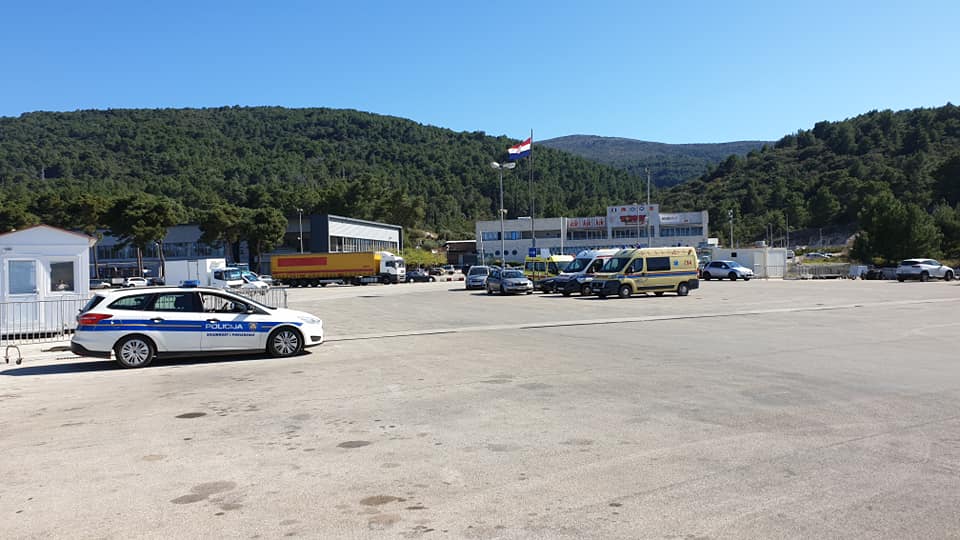
And I must mention the ferry. There will be a big TCN feature on what actually happens at the ferry, and how things are controlled, shortly.
But rest assured, the Hvar police and emergency services have everything under control. I witnessed the ferry arriving last night, and I was not only very impressed, but also very reassured by how seriously and professionally the authorities are working to keep us all safe.
And the final video for today - waiting for the ferry in the corona era.
To learn more about magical Stari Grad, here are 25 things to know for your next visit.
For the latest from the coronavirus crisis in Croatia, follow the dedicated TCN section.
Maslina Resort Open Day Gets Hvar Island Excited About Summer Opening
March 3, 2020 - Maslina Resort held its first Open Day on Saturday at the Stari Grad Theatre Hall.
With a new tourist season soon approaching, it’s safe to say you’ve heard a thing or a two about some of the newcomers to the scene this summer, like Maslina Resort on Hvar island.
Slated to open this June in Maslinica Bay, just a short skip away from the 2400-year-old town of Stari Grad, Maslina Resort is a five-star, boutique hotel that thrives off the philosophy of ‘Mindful Luxury’ - fusing high-end hospitality with chic interiors and respect to the environment, all while ensuring guests an authentic experience of Hvar island.
There is quite a bit to share about this soon-to-be haven of Hvar island, like how it implemented low-impact architectural design and is using all-natural materials to honor the island environment already in place, or that the hotel will be energy efficient and use homegrown herbs and spices from their organic garden in guest's dining and wellness experiences. But that's not even half of it.
Thus, while the hotel is still under construction, the Maslina Resort team invited Hvar island inhabitants to learn more about the project during an ‘Open Day’ event, held at the Stari Grad Theater Hall last weekend.
In a business-to-consumer style ambiance, curious visitors were given a chance to sit face-to-face with members of the Maslina Resort team to understand what the project is about through an animated presentation, ask their biting questions, present their resumes, or offer their locally-made products to be used within the resort.
A staggering 200+ visitors were counted in Stari Grad on Saturday morning, which is more than the Star Wars screening in the town!
Islanders young and old showed interest in the careers available at Maslina Resort, while an incredible number of locals presented their products, from lavender salt, infused olive oils and wine to essential oils, perfumes, bath salts, and aromatherapy sachets.



As a thank you, visitors were greeted with the Stari Grad treat, or 'paprenjak' honey and black pepper biscuits decorated with the Maslina logo.
If you missed Maslina's first Open Day event, stay tuned for another chance (or two) to catch them this spring.
To stay in the loop about Maslina Resort, you can follow the official Facebook page for the latest updates.
To read more about travel in Croatia, follow TCN's dedicated page.
Learn More About Maslina Resort this Saturday in Stari Grad
February 24, 2020 - Learn more about Maslina Resort this Saturday, February 29, 2020, at the Stari Grad Theater Hall.
Maslina Resort is a full service, luxury five-star seaside boutique hotel, overlooking the scenic Maslinica Bay on Hvar island. Slated to open this June, the Maslina Resort team is hosting an Open Day in Stari Grad this weekend, welcoming anyone curious to learn more about the project.
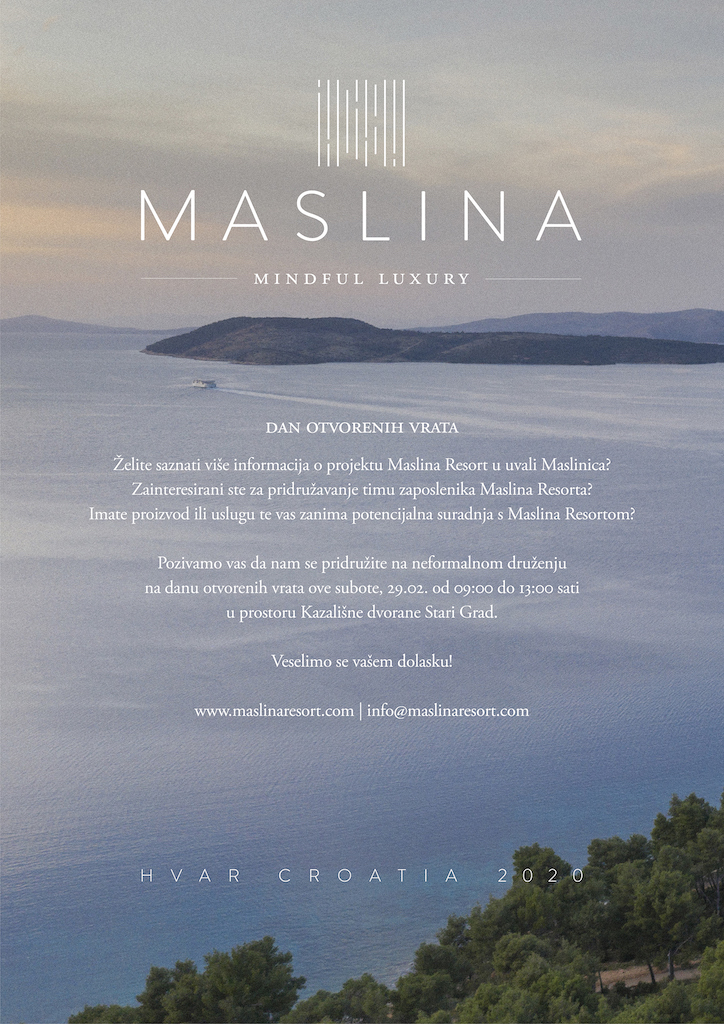
So, if you want to learn more about what's going on in Maslinica Bay, are interested in joining the Maslina Resort team, or have a product or service you think would be useful for Maslina Resort, join the team for an informal get-together this Saturday, February 29, from 09:00 to 13:00 at the Stari Grad Theater Hall.
Stay in the loop about everything happening at Maslina Resort by following their Facebook page.
To read more about everything happening on Hvar island, follow TCN’s dedicated page.
Stari Grad on Hvar: A Quality Destination Quietly Raising the Bar
January 27, 2020 - While Hvar Town attracts most of the media attention on Croatia's premier island, the former capital town of Stari Grad is quietly building up a quality tourism product of its own.
Having lived in Croatia for 17 years, 13 of them on Hvar, I have been able to watch the process of change in certain destinations. And while many coastal destinations on the Adriatic have traded in a little of their charm in exchange for those all-important (at least to the ministry) numbers of arrivals and overnight stays, there are thankfully some exceptions.

I am always struck, for example, by the old town of Korcula, which has not only managed to retain its authenticity, but also to promote the local artisans and gourmet experts as part of the experience. It is impossible to wander around that delightful old town without quickly understanding that this is an island of fine local wines (Posip and Grk), olive oil, great traditional food, and quality and original arts and crafts. If you are looking for an example of how to grow an historic town to excellent tourism based on quality not quantity.

Stari Grad on Hvar is another great example, and one which is quietly adding considerable class to its already-impressive 2,400-year charm.
Already home to UNESCO World Heritage Site, the Stari Grad Plain, Stari Grad's timeless pedestrian cobbled streets store the secrets of two millennia of civilisation, and the old town is arguably one of the most attractive on the Adriatic to explore. Similar to Korcula, there is an emphasis on art and local crafts in the old town shops, where others peddle cheap plastic Chinese souvenirs. Stari Grad has the best year-round dining options on the island, and there has been an explosion in new restaurant openings in recent years which has helped widen the culinary choice considerably. And it was a restaurant in Stari Grad, Apolon, which was the first on Hvar to get a mention in the Michelin Guide.

There has been significant investment in infrastructure in recent years, most notably in a sewage system, as well as the lengthening of the riva. This, coupled with the protected harbour the very deep bay offers has helped enhance the town's nautical tourism, which has seen an impressive rise in both numbers and quality in recent years.
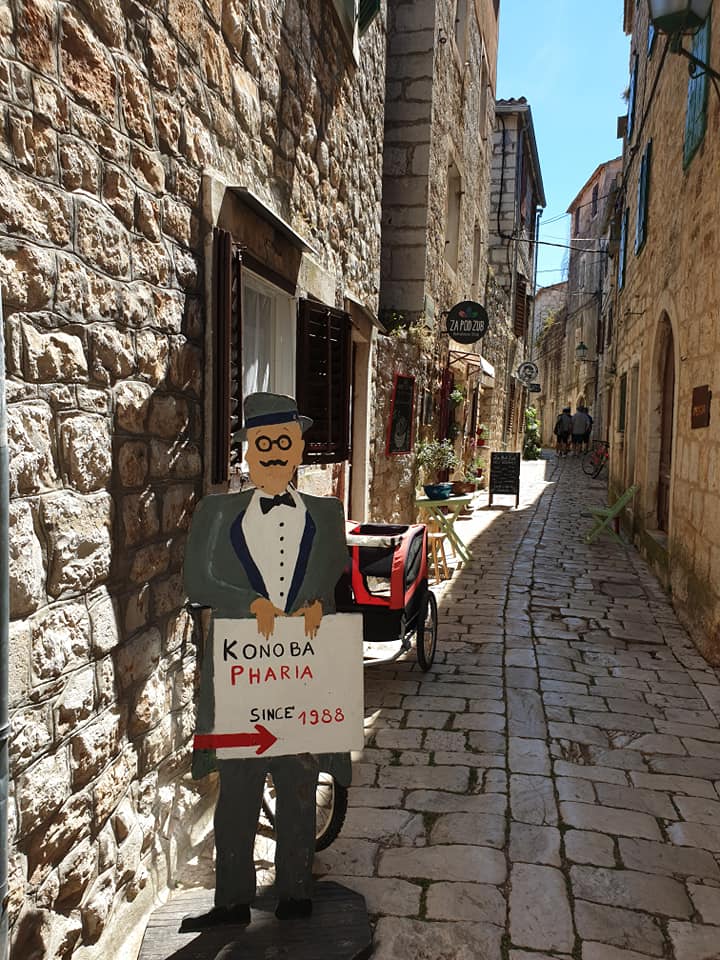
But it is in the accommodation sector where the biggest progress has been made, an area which has held Stari Grad back attracting more discerning guests in the past. The troubled Helios hotel group, whose 2-star hotels suffered from underinvestment and financial problems for many years. These have now been taken over by leading Croatian company, Valamar, which will transform them into 4-star hotels over the next few years.
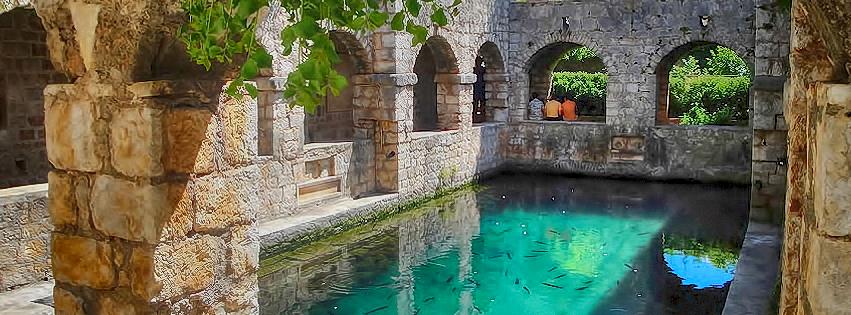
Across the bay around the corner from the main island ferry terminal, construction of the Olive Bay Resort continues apace, and its 5-star hotel is set to open this May, the second 5-star hotel opening on the island in 8 months, after Palace Elisabeth, hvar heritage hotel in Hvar Town last September. There are currently only two other non-boutique 5-star hotels on all of Croatia's islands.
And the big unknown - the Four Seasons resort at Brizenica Bay, just north of the town. Heralded at one of the most important tourism investments on the coast, Tourism Minister Gari Cappelli endorsed the project in June 2017, saying that the 140-million-euro investment would be opening its doors to its first guests in 2019. As 2019 turns to 2020, the project is still awaiting a building permit. Should the project ever happen, it will only add to the top-end tourism offer of the town. But if it does not, it would seem that Stari Grad is already on a very good path.
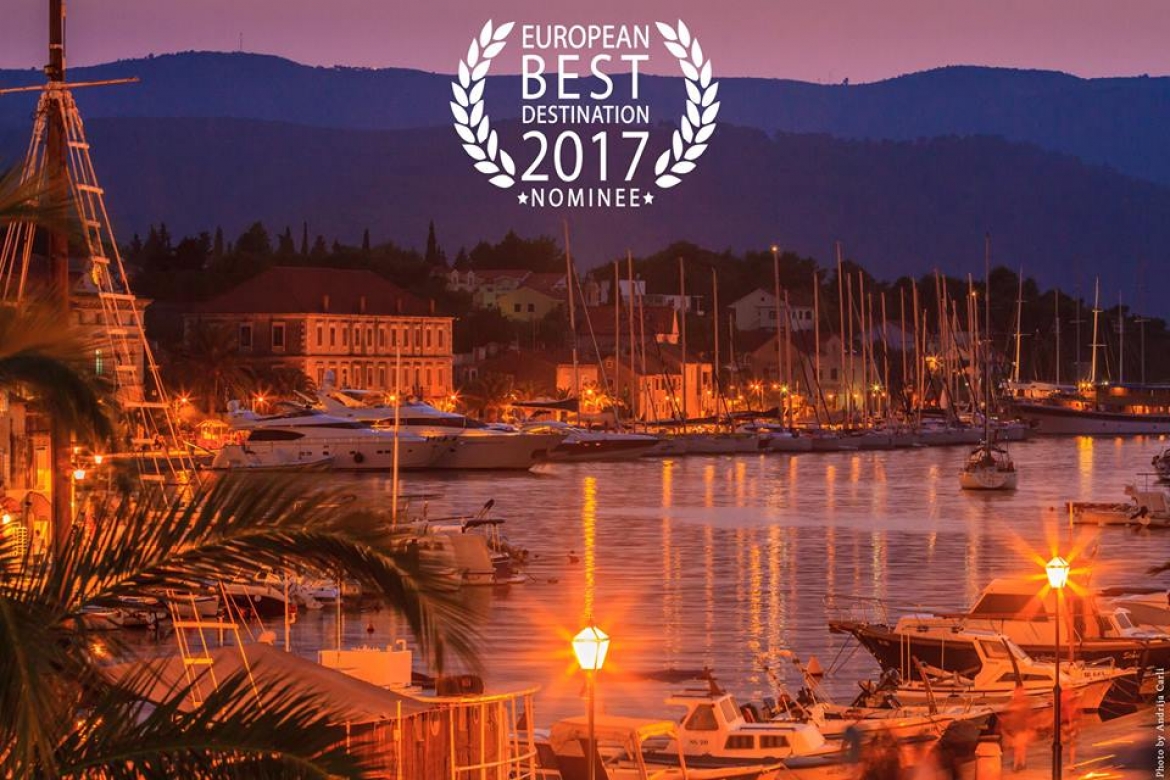
At the other end of the accommodation level, there is also good news for those who want to keep the party away from this very relaxed destination - in October 2018, Stari Grad mayor Antonio Skarpa announced that no more hostels would be built in the town.
A new tourist board director, Jaksa Damjanic, with an impressive commercial background in hospitality, has injected new energy and ideas into the tourism calendar, focusing on the traditions and heritage of the town, while working on new ideas and festivals.
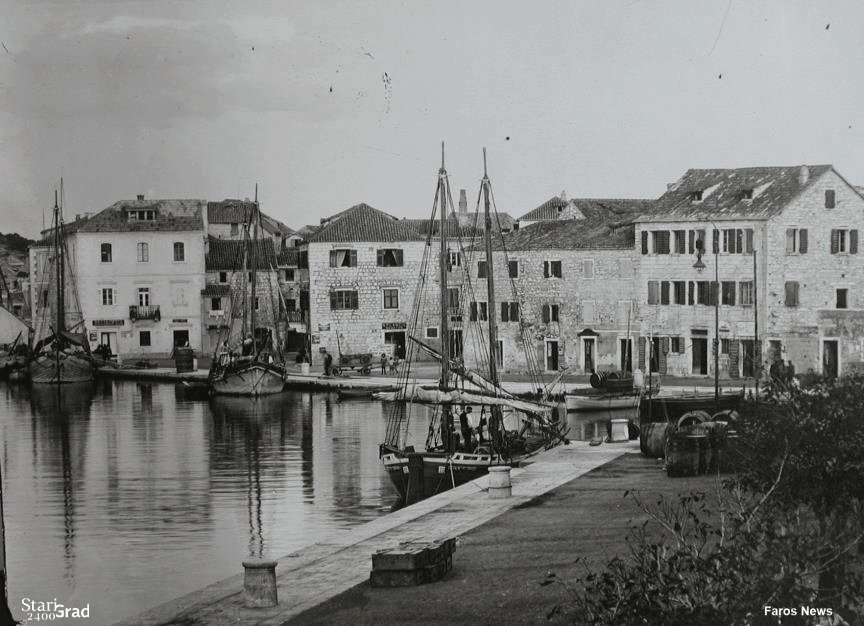
And, even in the peak of the season, the old town of Stari Grad retains its relaxed pace, never too busy, and offering refreshing coolness and shade from the midday heat.
A delightful destination moving in the right direction. Dalmatian tourism as it should be.
To learn more about Stari Grad, here are 25 things to know.
Jadrolinija Renews Fleet with 'Faros' Ferry to Sail Between Split and Stari Grad
January 14, 2020 - After a three-day voyage from Greece, and under the command of Captain Sandro Rundic, the 'Faros' ferry arrived in Croatia on Monday. The newest ferry in Jadrolinija's fleet should primarily connect Split and Stari Grad on Hvar before Easter this year.
Slobodna Dalmacija reports that the ‘Faros’ boasts a capacity of 600 passengers and 160 vehicles, was built ten years ago in Greece under the name "Stelios Filiagkos", and the state-owned shipping company purchased it from Agios Nikolaos (Saint Nicholas) from Salamina for just over HRK 63 million or EUR 8.5 million.
The Faros thus became the 52nd member of Jadrolinia's fleet. It is 104.9 meters long and 17.5 meters wide, and two Caterpillar machines with a total of 2000 horsepower provide a speed of 14 knots. The ferry is named after the ancient name of Stari Grad, the first Greek colony on the Adriatic.
The deal on the ferry, which was offered to the market five years ago, was concluded this fall, but the handover to the Croatian crew was made only ten days ago at the port of Kavala on the eastern Aegean coast, some 100 kilometers from Thessaloniki. The ship was then inspected by inspectors of the Croatian Register of Ships, who found no deficiencies and issued provisional certificates for navigation to the Adriatic.
Until recently, Stelios Filiagkos sailed from Kavala on a regular line to the island of Thassos, about 13 nautical miles away. The distance is twice as long to the main ferry port on the island of Hvar, which will be a real test for yet another Jadrolinia acquisition from Greece.
“I am extremely proud that we are connecting the Jadrolinija fleet with a ship which, by its capacity and speed, will significantly contribute to improving the quality of passenger transport service, especially in the summer months. The ferry will be at the Kraljevica Shipyard for the necessary equipment and preparation for the season, and we expect it to run from the spring. We believe that this offering in the fleet will satisfy the growing demands for passenger and vehicle transportation services in the Split area,” said David Sopta, President of Jadrolinija's Management Board.
"This is another step in modernizing our fleet, all to successfully fulfill the concession contract obligations with the state. In addition, this investment also achieves optimization of technical maintenance costs and long-term business stability. The ferry ‘Faros’ is primarily intended for navigation on the line Split - Stari Grad, but if necessary, it can be used for other lines concessioned by our company. With its large garage and passenger lounge capacity, it will make a significant contribution to improving the quality of service, especially during the summer months,” said the management of the Croatian company.
At the end of November, contracts were signed between Jadrolinia and a Russian company to buy two second-hand ferries, worth almost HRK 38.5 million, which also have Greek roots. However, since negotiations are still underway on conditions, handovers are expected in late January or early February.
These ships have long sailed on lines across the Kerch Strait, at the "junction" of the Black and Azov Seas. Still, since Russia has linked its territory with the occupied Ukrainian peninsula of Crimea by bridge, maritime connections are slowly losing their significance.
To read more about travel in Croatia, follow TCN’s dedicated page.
Barba Andro Turns 103 on Hvar, Still Mending Fishing Nets in Stari Grad
November 30, 2019 - As Barba Andro turns 103, what is the secret for a long and fulfilled life?
He was born during the First World War and served in the Second World War, and for many, many years, he has been one of the most recognisable icons of Stari Grad on Hvar.

Barbe Andro Muse, a fisherman by trade, whose dedication and expertise in repairing fishing nets over many years has made him one of the most-loved characters in Stari Grad. For many years, I would admire him from afar at Pizzeria Marko, as he worked tirelessly away repairing nets all day long, cigarette never far from his mouth (he has been a regular smoker for over 80 years).
Everyone is allowed one vice, but perhaps the secret of Barba Andro's longevity is a combination of the temperate Hvar climate, its UNESCO Mediterranean Diet, including plenty of fish caught by himself over the years, the relaxed 'laganini' lifestyle, and a great work ethic.
In honour of Barba Andro's 103rd birthday, local TV reporters Maja Zrnic and Jurica Vodanovic put together this wonderful tribute to him, reflecting on his many years on Hvar and his dedication to those fishing nets, which he still diligently repairs without the aid of glasses.
Happy 103rd birthday, Sir!
To learn more about the magic of Stari Grad, here are 25 things to know.
Advent on Hvar: Programmes for Hvar Town and Stari Grad
Advent on Hvar begins on December 1, 2019 - the full programmes in Hvar Town and Stari Grad.
One of the undoubted hits in Croatian tourism in recent years has been the late-season boost provided by Advent. Something hardly celebrated in tourism terms until just a few years ago, the rise and success of Advent in Zagreb has trickled down to the rest of the country, and seemingly every town now has its own December programme.
Advent on Hvar is no exception. For those of you used to the summer beaches, seeing a Christmas tree in the main squares of the towns can be an amusing sight. One of the things I always appreciated about Christmas on the island coming from Manchester was the lack of commerciality on the island. The Christmas tree in Jelsa used to go up on the main square ten days before Christmas. And a minimal exchange of presents and hearty family lunch, and that was Christmas. Much better.

Advent on Hvar has also gained in popularity in recent years, and this year's festivities kick off tomorrow in both Hvar Town and Stari Grad.
The full programmes are above and below - a nice break from those long winter evenings before Easter and the dawn of a new tourist season.

To learn more about the island of Hvar, check out the Total Croatia Hvar in a Page guide.
Meet Croatia's UNESCO World Heritage Sites: Stari Grad Plain on Hvar
November 27, 2019 - Filipa Marusic continues her look at the considerable UNESCO heritage in Croatia. Next up, World Heritage Site the Stari Grad Plain on Hvar.
The Stari Grad Plain is a cultural landscape that has remained almost the same since the Ionian Greeks came from Pharos in the 4th century BC. This heritage has been part of the UNESCO World Heritage list since 2008. It showcases the ancient geometrical system of land division used by the ancient Greeks called the “chora” which has remained intact over 24 centuries.

The agricultural activity in the chora was always here and based on grapes and olives the same as it was set up by the ancient Greeks 2400 years ago. The shape of the land division is the same, and the structures built by dry stone walling are authentic and reused throughout time. Additionally, this is a unique example of the land parcel system introduced by the Greeks. The cadastral division of the Stari Grad Plain is one of the best-preserved examples of Greek ancient culture in the entire Mediterranean. Despite all the historical and political changes over the centuries and multiple divisions of the plain, the Greeks set the structure. The Greek chora is embodied in the dry stone wall, which marks the land division. All later divisions of the land – Roman, medieval, or newer were always respecting the Greek shape and had the same dry stone walling technique. There is evidence of all different cultures who used the plain throughout time. The evidence is different archaeological findings dating all periods, from pre-history to medieval times.
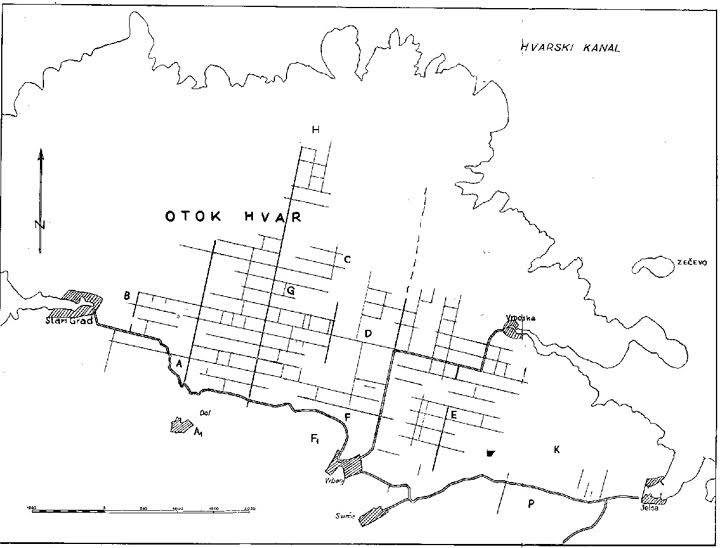
The Stari Grad Plain is the biggest and the most fertile plain on the Adriatic islands. It had and still has its agricultural use, and local people grow the same cultures – olives and grapes. Archaeological findings prove the local inhabitants had their faith in the fruitfulness of the plain. In medieval times the plain was under the protection of the patron saint of Hvar diocese St. Stephen. The Hvar statute from 1331 mentioned the plain, and it listed roads and borders of the plain and several place names for places with later discovered archaeological evidence. The Stari Grad Plain changed its names according to how its owners changed. Different names include Greek Xωpa Φapoυ, Roman Ager Pharensis, medieval Campus Sancti Stephani, or today Stari Grad Plain.

The precise boundaries set by the Greeks in the plain are the work of villagers who used dry stone walling techniques even in ancient times. Some are just a barrier between two different lands, while others are quite wide and were in use as paths. Around the plain, there are circular stone houses called “trimi” or “bunje” used in the past as storage and shelter during bad weather. While the land here is fertile, the Mediterranean climate often has dry weather, so the plain has several reservoirs for collecting and saving the rainwater. All the different buildings located in the Stari Grad Plain range from the remains of farmhouses and drystone shelters to churches and chapels are there to prove the reusability of all the elements through centuries.
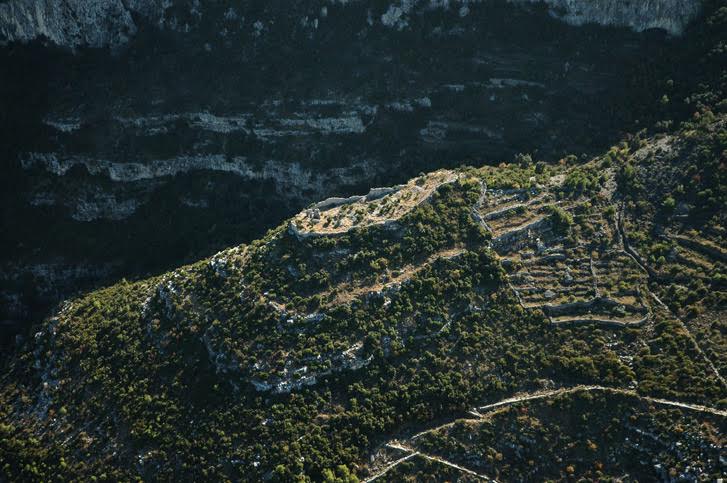
The Greek origin is visible in the very island name coming from Greek word Pharos (Faros), which ancient Greeks from Pharos island in the Aegean Sea gave when they arrived at where is now Stari Grad in 4 century BC. There were about 1000 inhabitants sent to colonise Hvar island. When Pharos became an independent Greek town polis in the 1st century BC, the Romans named the island Faria. In early medieval times, when Croatians came to the islands, they took over the names which locals used and adapted it to the Slavic language – this is how we have Hvar island name. Most Greek colonisations happened from 8th to 5th century BC, and there were about 700 colonies in the Mediterranean and Black Sea. At that time, there were just a few Greek colonies in the Adriatic Sea, so Adriatic islands were the only uncolonised part of the west from Greece in the 4th century BC.

There is some prehistoric evidence dating back to Neolithic times (6000-3000 BC), which proved this fruitful area was inhabited much earlier than the Greeks. Additionally, there are findings from the Bronze and Iron Age as evidence the Greeks found native inhabitants on Hvar when they first came. Also, at the time, Illyrian tribes lived in this area, and islanders cooperated with Illyrian tribes on the mainland. When Greeks from Pharos came to Hvar, apparently, there was at first peaceful agreement with local inhabitants. Later on, this agreement wasn’t respected, so local natives decided to attack the colony. As the land division was one of the main tasks of colonisation, this was probably one of the reasons for the conflict. We also know that the Greeks built the town on the coast with fortifications. This fact, along with the land division, meant then needed a lot of money at the time to do that.
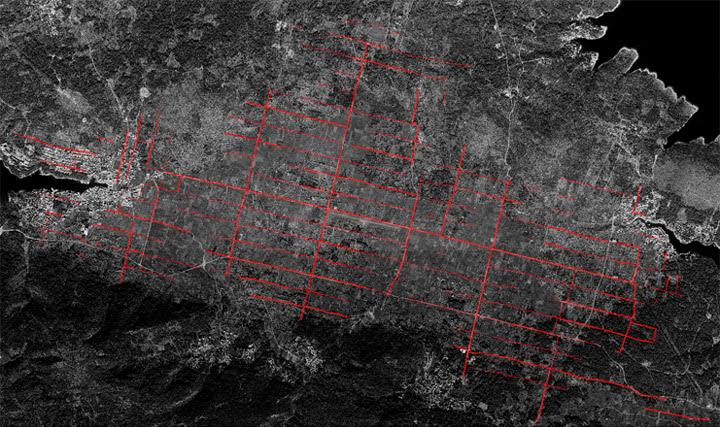
The cadastral plan and air image of the plain show that the border around the land has a size of about 180x900 m, no matter the division within this land part. The ancient Greek measuring system contains the measures that were in use. 180 m was the length of the Greek stadium while 900 m have five stadia. The average width of the roads was 10 Greek feet or about 3 meters. The Greeks used different sizes for this measure, but here research discovered it was 0,3026 m, and it was probably a standard measure in 4th century BC for some Greek towns. All the divided land in the direction east-west are parallel and break in one central point in the direction north-south. In ancient Greece, this point was called “omfalos” and represented the central unit where different paths meet. The land measure excluded the connecting roads. The base for the plain is karst terrain with several slopes where the land can quickly erode, and this is why people built so-called terraces or support walls. The terraces and dry stone walling is a valuable heritage people nurtured for years.

The chora had farmhouses, but there are just a few found as they were probably the foundation for Roman villa rustica. In the area, two guard towers protected the land. Additionally, there were perhaps temples dedicated to gods of fertility. There weren’t many Greek inscriptions in the area, but there is a stone fragment where it said “Border of the land of Matija, son of Piteja” which meant people of the time respected their land borders. Another larger inscription is evidence that local people of Pharos set three members to Greek Pharos to ask for money to renew the city, which proves they had a democratic setup. The local Greeks also were equal in terms of land amount and had similar housing.
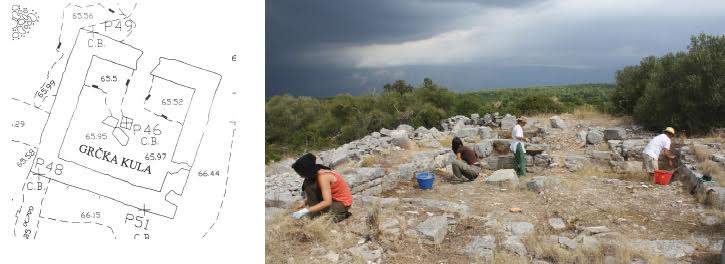
The ancient Pharos even had its mint, but as Greek Paros didn’t have their own money, they used money from Greeks on Syracuse as inspiration. There are numerous versions of money from this area, as well as coins from different regions proving there were plenty of trades going on in ancient times. The ancient vessels and vases from the area show they were imported from Greece or locally made. The end of Pharos ancient Greek town is not known, but there is evidence of Roman building activity from 1st century BC.
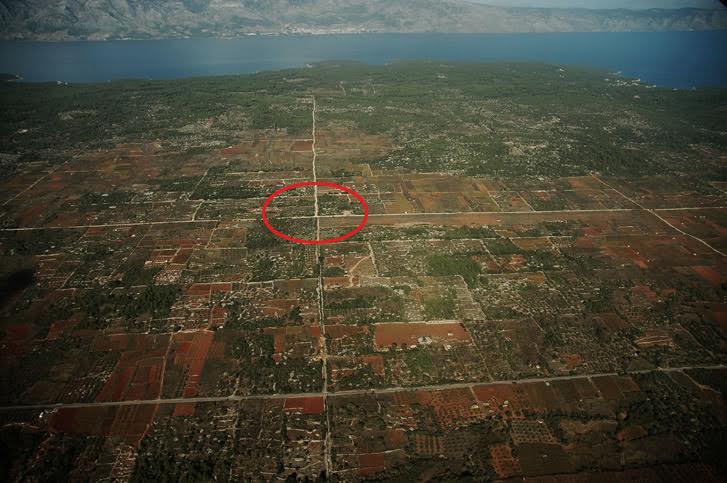
In ancient times the most important agricultural products were wheat and olives. The plain area divided this way gave good income to people – if they grew just wheat, the market surplus was between 41000 and 157000 silver drachma (one drachma was the daily income of the worker and its equivalent of approximately 30 EUR). The Greeks planted olive trees and produced wine, figs, rosehip, almonds, carob, and other cultures. They went fishing, hunting, and were beekeepers. They also had cattle for food and for towing and carrying loads. The different amphora remains proved there was active production of wines and olive oil. The ancient Greeks probably had food supplies and stored the food for the time of war and as protection against robberies.
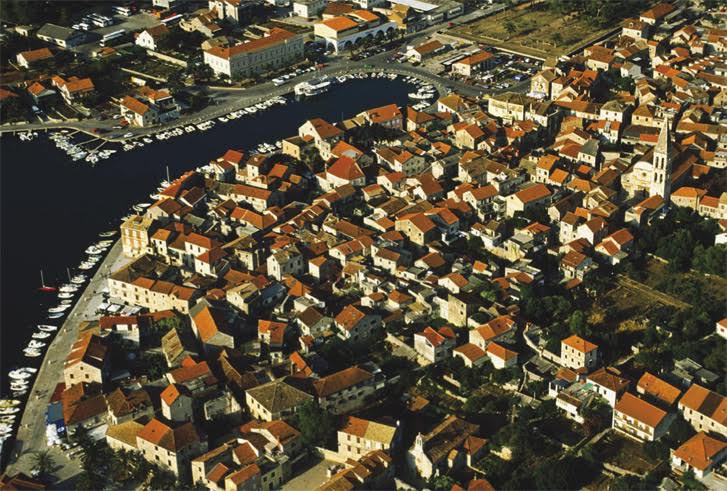
Toward the end of ancient times, Hvar island was quite well inhabited, especially the Stari Grad Plain area. As already mentioned, there are some early Christian churches which have medieval artifacts as well as circular dry stone shelter buildings from different periods. The Stari Grad itself has a range of different structures from the late ancient period to the end of the 19th century, which together create urban complex. From medieval times the bigger ancient lands were divided into smaller parts, and they reflect the changes through centuries.

When it comes to everyday life around Stari Grad plain was always connected to agricultural works depending on the season. The Hvar statute from 1331 gives the oldest written advice on agricultural work. Even today, the same rules are used in agriculture – the first warmer days after winter are for work, and this is the hardest part, and then summer is to keep the vineyard from any diseases. September is the month of harvest, followed by winemaking in October. November is olive picking, and December and January are for rest. From all the agricultural cultures, there are mostly grapes and olives but also lavender and rosemary, as well as other fruits grown here from ancient times. When some of the vineyards were destroyed at the beginning of the 20th century, lavender became part of Hvar's agricultural heritage. Rosemary is another aromatic herb growing on Hvar and other parts of the Adriatic coast. The vineyards and winemaking heritage are part of local identity for centuries. The authentic Dalmatian variety plavac mali grows here as well as indigenous Hvar variety of white wine bogdanuša and prč and red wine drnekuša. Olive trees were probably on Hvar even before the arrival of Greeks, but their arrival meant the beginning of cultivated olive groves.
The religious celebrations set the time for the biggest local festivities. At Easter time, there is a unique procession Za Križem during the night from Maundy Thursday to Good Friday, which has been the same for more than 500 years going from different villages and towns around the Stari Grad Plain. TCN wrote about this unique UNESCO protected heritage in several pieces. At Christmas time there is kolendanje – groups of children or adults sing old songs with good wishes for the year that is to come in front of the houses of friends or neighbours. The special occasions ask for special meals such as starogrojski paprenjok – a pastry made from honey, flour, olive oil, prošek and different spices. It represents local traditions and uses locally produced ingredients.
If local people didn’t use the Stari Grad Plain, the valuable heritage wouldn’t be at such a good level of preservation. The Stari Grad Plain is the best-preserved example of the Greek land division, and it stayed that way as locals continuously used the land throughout the centuries. The dry stone walls which were built and rebuilt saving the shape of the parcels. The value of the Stari Grad Plain encouraged local and state authorities to work on the revitalisation of old parts of the plain with planting traditional agricultural varieties and promoting this heritage in the cultural aspect of Hvar tourism. The idea is to keep the same shape and land parcel system set by the Greeks and keep all the paths and routes around the lands the same without the use of any modern building techniques. The idea is to renovate all the buildings according to the traditional way and reuse them for tourism purposes and keep archaeological researches active.
For more information about the Stari Grad Plain, visit the official website.
To learn more about Stari Grad, here are 25 things to know.
Kabal Peninsula, a Natural Hvar Paradise with Surprises above Stari Grad
October 13, 2019 - What exactly lies on the Kabal Peninsula above Stari Grad on the island of Hvar?
It is one of the most photogenic - and deserted - parts of the island of Hvar, voted last week at the best island in Europe by readers of Conde Nast. The lead photo above is one of my favourite of Hvar, taken by Mario Romulic and depicting a sleepy turtle watching a speedboat pass by.
But for all its beauty from the air, not many people visit the Kabal Peninsula, which juts out into the Adriatic above Stari Grad on the north of the island. One reason, perhaps, for the lack of visitors is that there is also very little information about the peninsula. What exactly is there?
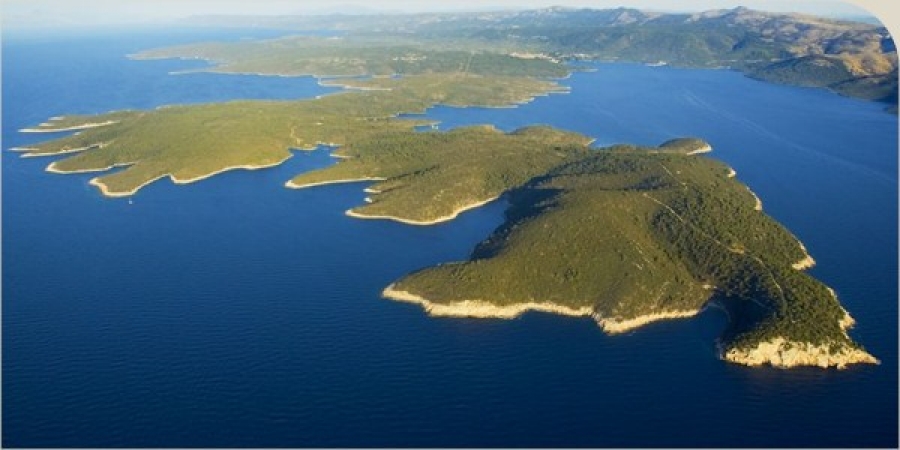
As you can see from the aerial shots, the Kabal Peninsula is a green paradise, largely undeveloped and uninhabited. Indeed, there are only two villages, Mala Rudina and Velika Rudina, and Mala only has a full-time population of two! The peninsula enjoys a protected status, so there are unlikely more villages being built in the future, although there is a slightly different story on the coastline.
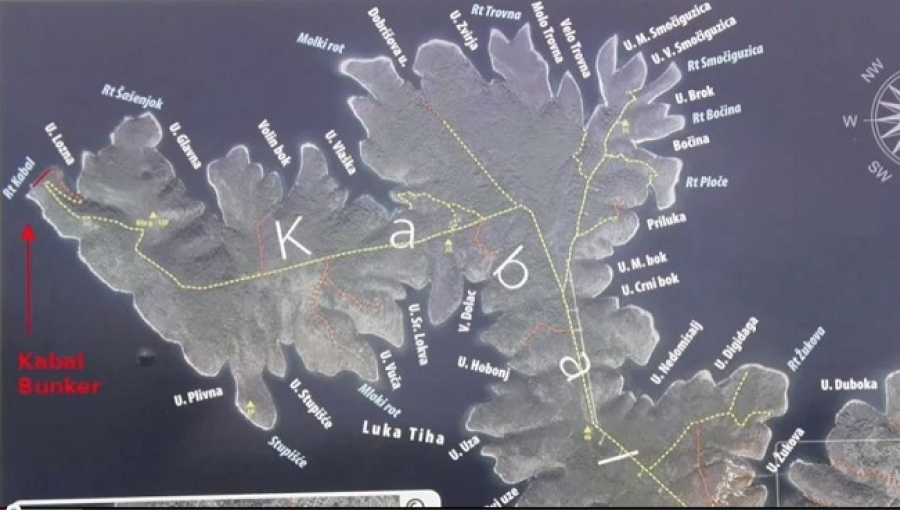
But while the Kabal Peninsula may look as though is it merely untouched nature, it does have a couple of interesting things to see. Did you know, for example, that at the very tip of the peninsula and at the entrance to the Stari Grad bay, Tito built some bunkers to protect the island from attack?
You can see them clearly from the ferry as you are entering the Stari Grad bay if you know where to look (on the left hand side of the bay as you enter), but if you want to explore them physically, a drive the length of the peninsula is called for. The road is not asphalt, but it is fine for a regular car, and about 12 km in distance from the Rudine villages.
Take a tour in the video above. And a little tip - you can see some of the best sunsets on the island from the bunkers. A fun and alternative way to experience the considerable beauty of the island.

There may not be many villages on the Kabal Peninsula, but there are plenty of bays. And where you find an isolated bay in Croatia, you often find a house. And sometimes with a celebrity inside... Here is Goran Visnjic a few years ago boarding a seaplane in Jelsa after a visit to his waterfront house on the Kabal Peninsula.
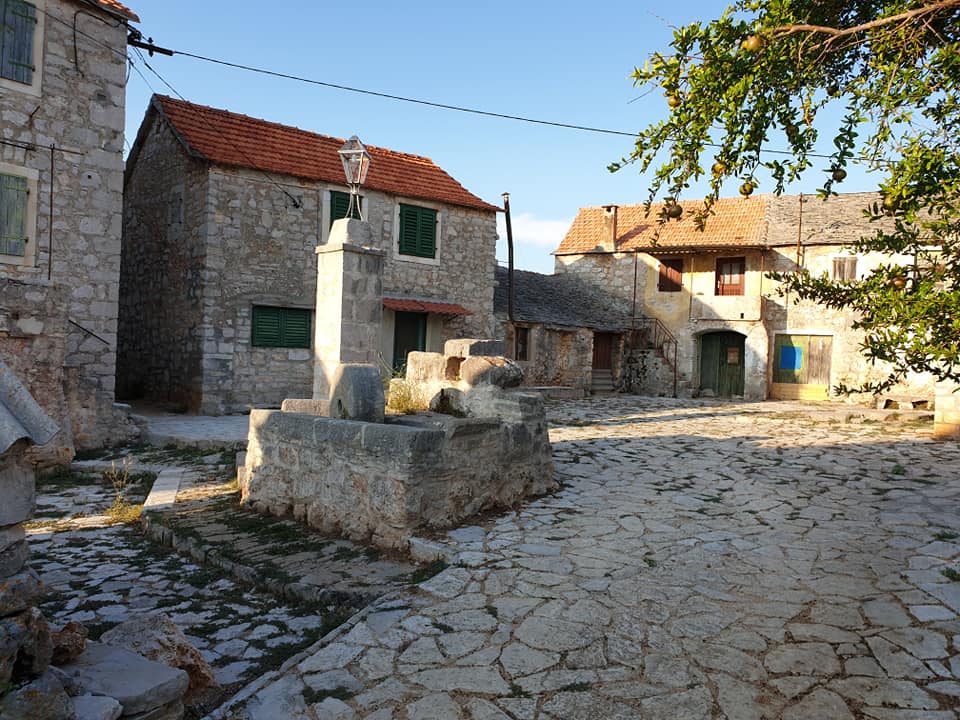
Mala Rudina is tiny, but it is one of the prettiest settlements in Dalmatia, and it has been included in various projects with EU funding along with other eco-ethno villages on Hvar - Humac, Velo Grablje and Malo Grablje. Check out the video below.
The area around Mala Rudina underwent a huge change about 15 years ago, when construction of a new villas project began. Eleven luxury villas, whose area was bigger than the village itself.
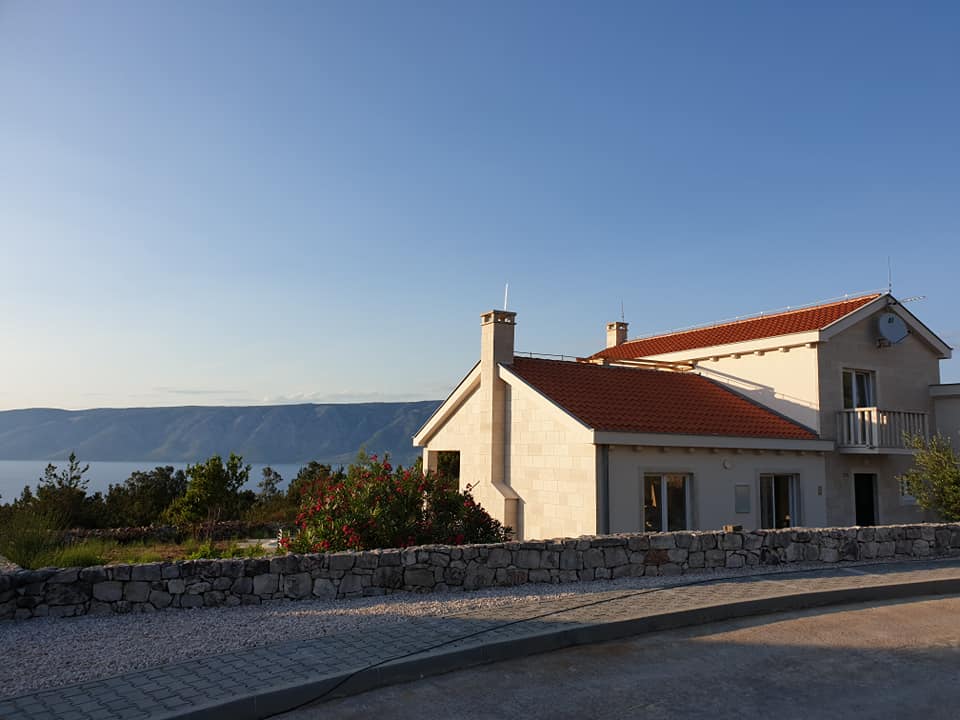
Paperwork issues meant that the project stopped shortly before completion in around 2005. And there the project lay, rotting, for more than a decade.
Things changed this year, as a Czech company took over the project and managed to resolve the paperwork issues and complete the project. The villas finally opened for renting in August this year, some 15 years after construction began. You can take a tour from my summer visit here.

Velika Rudina, a much bigger settlement, is my favourite living village on Hvar. it is also a little different to the rest and is also known locally as 'Little Bosnia.' There is a small historic centre, but the village has expanded in various directions, and there is a great sense of community. Unlike most villages on the island, Velika Rudina does not have a historical tie with a bigger settlement - Vrisnik with Humac, Pitve with Zavala, Svirce with Ivan Dolac - and its population reflects that.
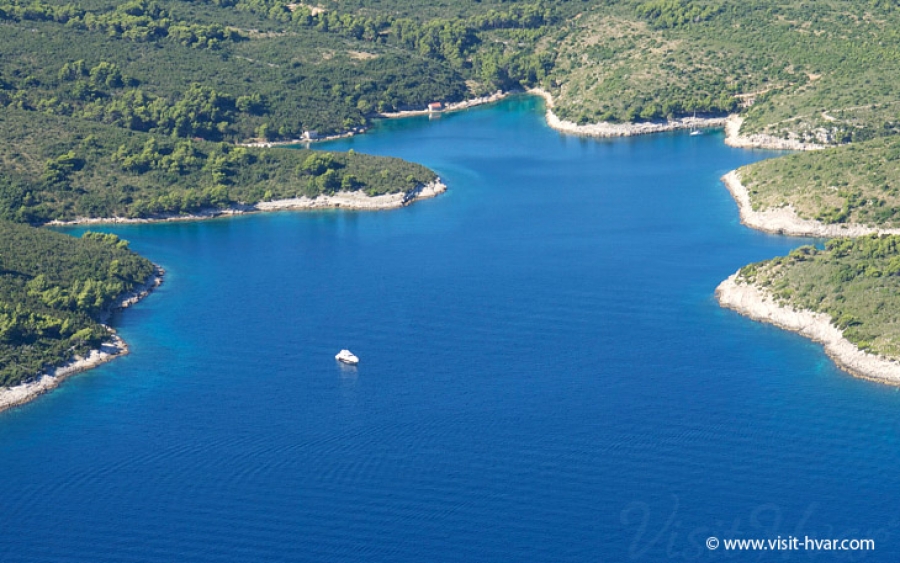
And if you are looking to swim in Stari Grad, the bay of Zukova is less than two kilometres away by car and a short walk from Velika Rudina. A gorgeous spot for a family day at the beach. Zukova is one of many bays on the peninsula, some much wilder than others. The majority are deserted, even in the season.
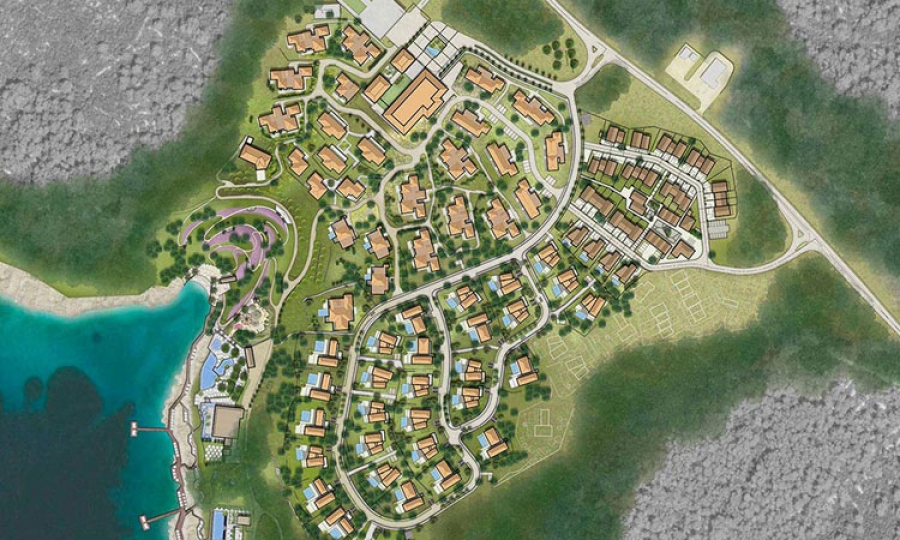
The biggest change to the peninsula planned is in Brizenica Bay, one of the many beautiful bays on Kabal, and very close to Stari Grad. The first Four Seasons resort in Croatia was due to open this year, a 140 million euro investment of luxury hotel and villas, which would raise the level of hospitality in the region. At time of writing, the project is inching forward, but a full building permit has yet to be issued. If constructed, the project will change the local landscape permanently, with some welcoming the development and others opposed. Time will tell is Croatian bureaucracy is the final arbitrator.
The Kabal Peninsula plays an important role in the most challenging sporting race of the Hvar calendar, the annual Faros Marathon. Now in its 44th year, the Faros Marathon is a 16-kilometre open sea swim, which attracts some of the top names in international swimming, including Olympic medal winners. The race, which takes place in late August/early September starts and finishes in the harbour of Stari Grad, and the athletes swim the length of the Kabal Peninsula to its very tip 8 km from the town, before turning round and returning to the finish line in Stari Grad.
Want to learn more about Stari Grad and surrounding area? Here are 25 things to know.
1 Hvar Tourist Board, 6 UNESCO Heritages, 1 Location, 1 Night
October 7, 2019 - Hvar's 5 tourist boards will promote the island as one destination. A look at how that might look promoting UNESCO Hvar heritage.
It may come as a surprise to some, as it did to me, to find that the island of Hvar has five tourist boards, each tasked with the job of promoting its own part of the island. If you think that is crazy, look at Brac where there are 7 or 8... After long discussions, the 5 Hvar tourist boards have decided to come together and will promote the island as one brand and with one strategy. As I understand it, the tourist board directors will rotate the position of main director each year, and the mayors will also do the same in their capacity of President of the Tourist Board.
So what kind of projects may the island promote together as one island? There are several that come to mind, including one I came up with for all the UNESCO Hvar heritage. For the 6 UNESCO Hvar heritages the island possesses is more than any other island in the world. We will come to them in a minute. For a visit to Baranja last week showed another obvious and popular activity - wine and walk tourism.
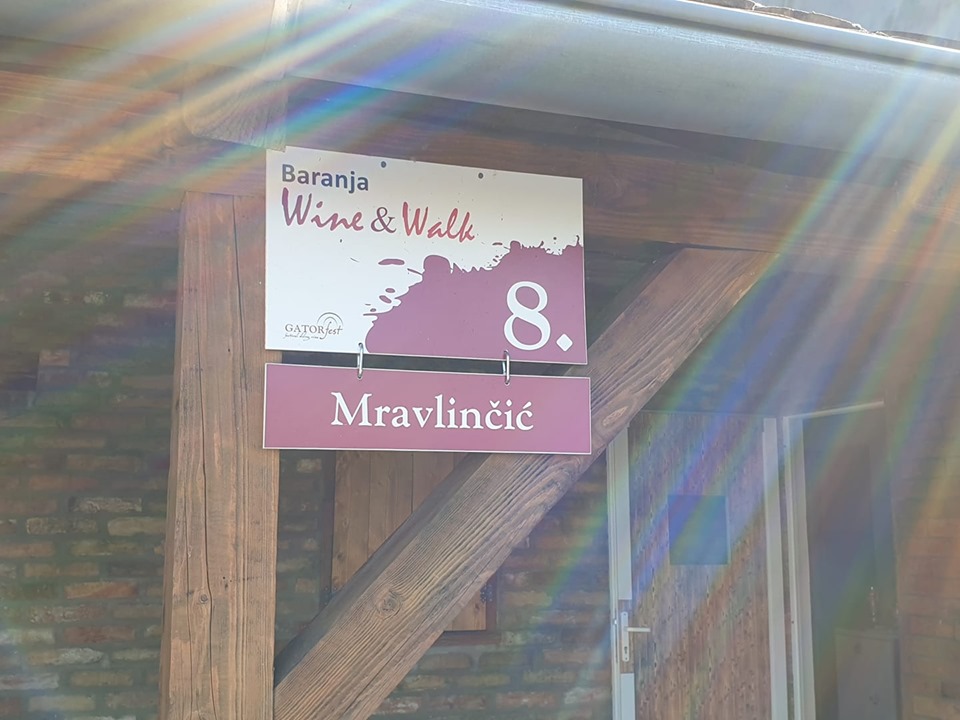
In Baranja, they have 12 wineries spaced over 12km and there is a map (pic of one of the stations above). They pay an initial fee and get a glass and holder to put around their neck and off they go. In Baranja, they have 12 wineries spaced over 12km and there is a map (pic of one of the stations above). They pay an initial fee and get a glass and holder to put around their neck and off they go.
Plancic in Vrbanj, Pavino in Stari Grad, Zuvela in Ager, Caric and Pinjata in Vrboska, Dubokovic, Tomic, Huljic in Jelsa, Marjan in Pitve, Ahearne in Vrisnik, PZ Svirce. Plenty to see on the way in terms of island sights, and some thought would have to go into the route and whether or not to include all these, but there is the makings of a fun way for tourists to discover the wine island of Hvar.
But the joint project I really like is to bring together the six UNESCO heritages of Hvar at the same time in one location, which can only happen at one very specific time of the year.
Location, the UNESCO World Heritage Site of the Stari Grad Plain, or Ager (or Hora, depending on your approach to its history). A dinner at Agroturizam Pharos for a group of guests, some paying, some international media, so that they can cover this unique event of the island showing its UNESCO Hvar credentials.
Tablecloths and napkins made from the agave lace from the Benedictine Nuns in Hvar Town.
In the very fertile filed where the Ancient Greeks first planted vines and olives 2,400 years ago, a feast for the guests featuring the UNESCO Hvar Mediterranean Diet, one of 9 locations in the Mediterranean which had its diet inscribed as intangible heritage in 2013.
Music? What other option that the romantic sound of traditional a cappella klapa from southern Dalmatia.
An evening to be savoured with wondering at the craftmanship in the dry stone walls that are to be found all over this world heritage site
And at a certain time on Maundy Thursday, just before Easter (and the reason this unique event must be time sensitive), the 500-year tradition of Za Krizen, or Behind the Cross. Six simultaneous processions depart at 22:00 from Jelsa, Pitve, Vrisnik, Svirce, Vrbanj and Vrboska, following the same 22km circular route through the night until 07:00. All processions pass through the Stari Grad Plain. A magical evening of culture, heritage, nature and reflection.
UNESCO Hvar all in one place and one location for one night only. It could be a fantastic story, as well as promoting aspects of Hvar that many tourists miss.
To learn more about the island of Hvar, check out the Total Croatia Hvar in a Page guide.
For a look at all the UNESCO World Heritage Sites and intangible heritages, head on over to the Total Croatia UNESCO guide.


